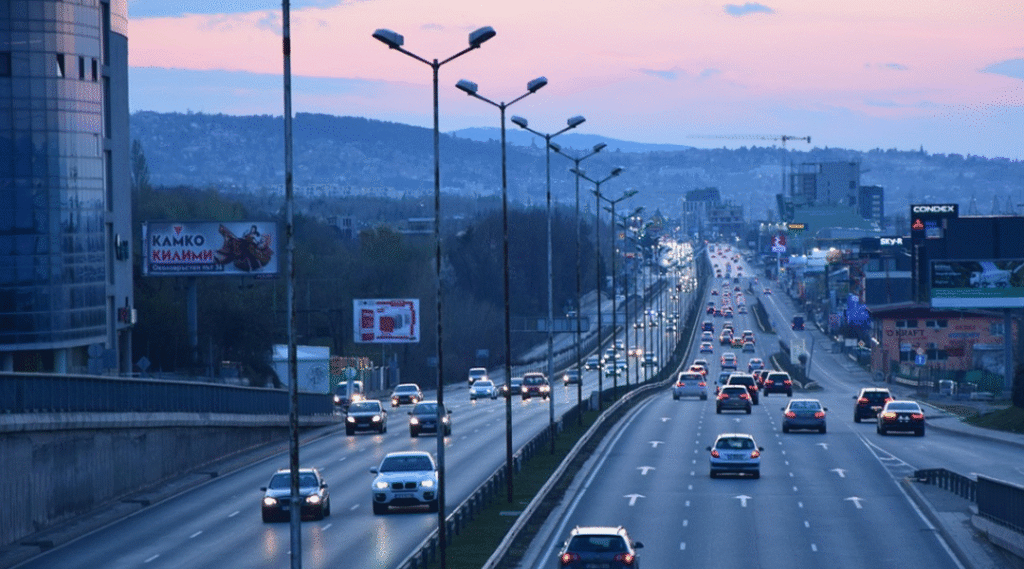In the twenty-first century, cities around the globe are under unprecedented pressure to accommodate growing populations, rising vehicle ownership, and the imperative to reduce congestion, emissions, and accidents. Traditional traffic management models—reliant on static signal timings, human monitoring, and fixed infrastructure—have reached their limits. The integration of Artificial Intelligence (AI), fifth-generation wireless networks (5G), and smart Internet of Things (IoT) technologies promises a paradigm shift, enabling cities to evolve into intelligent, adaptive ecosystems. This article explores how these three pillars work together to redefine urban mobility, enhance safety, and promote sustainability.
1. AI: The Brain Behind Smart Traffic
Artificial Intelligence serves as the cognitive core of next-generation traffic systems. Machine learning algorithms process vast quantities of data—from cameras, sensors, and historical traffic records—to identify patterns, predict congestion hotspots, and optimize signal timings in real time. Deep learning models can analyze video feeds to detect incidents, count vehicles, classify road users (cars, buses, cyclists, pedestrians), and estimate queue lengths at intersections.
Furthermore, AI-driven demand forecasting allows transportation authorities to anticipate rush-hour surges or special-event traffic and proactively adjust control strategies. Adaptive traffic signal control systems, powered by reinforcement learning, continuously “learn” from the effectiveness of past signal plans, dynamically altering green-light durations to minimize stops and delays. As AI models mature, they can also support multimodal coordination—synchronizing buses, trams, and bike-sharing services—creating seamless door-to-door journeys for commuters.
2. 5G: The High-Speed Nervous System
Where AI provides the intelligence, 5G delivers the speed and reliability required for instantaneous communication. With peak data rates exceeding 10 Gbps, millisecond-level latency, and the capacity to connect up to a million devices per square kilometer, 5G networks eradicate the bottlenecks that hinder earlier wireless generations.
Low latency is critical for safety-critical applications: for instance, instant transmission of collision warnings between vehicles (V2V) and between vehicles and infrastructure (V2I). Emergency braking alerts, pedestrian crossing notifications, and dynamic speed limit advisories can be relayed with imperceptible delays, dramatically reducing reaction times and accident risks. Additionally, the massive machine-type communication (mMTC) capabilities of 5G allow dense deployments of IoT sensors—on roads, bridges, streetlights, and parking spaces—ensuring that every element of the urban mobility ecosystem remains connected.
3. Smart IoT: The Sensory Fabric of the City
Smart IoT devices—ranging from environmental sensors embedded in pavement to vehicle-mounted telematics units—constitute the sensory layer that feeds AI engines with real-world data. Traffic cameras equipped with computer-vision capabilities, road-embedded magnetometers, and acoustic sensors detect vehicle presence and speed. Air-quality monitors assess pollution levels near busy intersections. Smart parking sensors guide drivers to available spots, reducing circling and the associated emissions.
IoT-enabled streetlights adapt their illumination based on pedestrian and vehicle volumes, conserving energy while maintaining safety. Furthermore, connected traffic signs and variable message displays can broadcast real-time information—detour routes, estimated travel times, or accident alerts—directly to drivers and commuters. This pervasive sensor network transforms static roads into dynamic, responsive environments.
4. Synergy in Action: Use Cases in Modern Cities
Several pioneering cities are already harnessing this triad of technologies:
- Adaptive Intersection Control: In Singapore, the Land Transport Authority employs AI at intersections to analyze live video streams and adjust signal timings, reducing average travel times by up to 20%.
- Connected Public Transit: Barcelona’s bus fleet uses 5G-enabled IoT modules to relay vehicle location and occupancy to a central AI system, which optimizes routes and dispatch frequencies according to demand fluctuations.
- Smart Parking Management: San Francisco’s SFpark program integrates sensors with a mobile app to inform drivers of available parking, cutting average parking search times by 43% and reducing congestion in high-traffic zones.
These implementations demonstrate measurable improvements in travel efficiency, emission reductions, and citizen satisfaction.
5. Challenges and Considerations
While the benefits are compelling, deploying AI-5G-IoT systems at scale entails several challenges:
- Data Privacy and Security: The collection of granular mobility and behavioral data raises concerns about surveillance and misuse. Robust encryption, anonymization protocols, and transparent governance frameworks are essential to maintain public trust.
- Interoperability and Standards: A heterogeneous mix of vendors and legacy systems can hinder seamless integration. Industry-wide standards for data formats, communication protocols, and cybersecurity are crucial to ensure that devices and platforms work together.
- Equity and Accessibility: Cities must guard against technology-driven disparities, ensuring that underserved neighborhoods receive the same benefits of reduced congestion and improved safety. Affordable access to connected mobility services and inclusive design must be prioritized.
- Infrastructure Investment: Upgrading streetlights, installing sensors, and rolling out 5G base stations require substantial capital. Public-private partnerships, value-capture financing, and phased deployment strategies can help manage costs and share risks.
6. The Road Ahead: Towards Autonomous and Sustainable Mobility
Looking forward, the fusion of AI, 5G, and IoT lays the groundwork for fully autonomous vehicle corridors, dynamic congestion pricing, and energy-harvesting smart roads. AI will coordinate fleets of self-driving shuttles, rebalancing routes in real time to match passenger demand. 5G’s ultra-reliable low-latency communication (URLLC) will enable vehicle platooning on highways, improving fuel efficiency and traffic flow. Smart roads embedded with piezoelectric materials might power roadside sensors, creating self-sustaining infrastructure.
Crucially, these advancements align with broader sustainability goals: reducing greenhouse-gas emissions, curbing noise pollution, and encouraging the shift to shared, electric mobility. By converging intelligence, connectivity, and sensing, cities can transform traffic management from reactive control to proactive orchestration—and ultimately, create safer, greener, and more livable urban environments.
Redefine the Very Fabric of Urban Traffic Systems
The integration of AI, 5G, and smart IoT technologies is redefining the very fabric of urban traffic systems. This powerful triad enables cities to move beyond static, schedule-based models toward adaptive, data-driven ecosystems that respond in real time to the ever-changing rhythms of urban life. While challenges in privacy, interoperability, equity, and funding must be addressed, the potential rewards—a drastic reduction in congestion, improved safety, lower emissions, and enhanced quality of life—are profound. As cities worldwide embrace these technologies, the next generation of smart traffic management will not only keep people moving efficiently but will also pave the way for a more sustainable and inclusive urban future.
More for the topic:
Building Ethical, Legal, and Secure Smart Traffic Systems
The Future of Smart Traffic: Key Trends for 2025 and Beyond
Who’s Leading the Smart Traffic Revolution?
As for in-depth insight articles about AI tech, please visit our AI Tech Category here.
As for in-depth insight articles about Auto Tech, please visit our Auto Tech Category here.
As for in-depth insight articles about Smart IoT, please visit our Smart IoT Category here.
As for in-depth insight articles about Energy, please visit our Energy Category here.
If you want to save time for high-quality reading, please visit our Editors’ Pick here.



